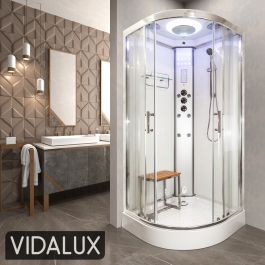I'm installing a steam shower in my bathroom and its power rating is 3KW @ 220-240v.
There is an existing flex outlet that is currently outside Zones 0,1 and 2. The flex outlet has a switch outside of the bathroom that switches both the live and neutral.
When installed the flex outlet will be out of sight behind the shower. The shower is fully enclosed so there are no surrounding splash zones.
The source of the flex outlet is the upstairs ring main and it is a spur off that main. The spur does not have a fuse, it goes directly from the ring to the switch and from the switch to the flex outlet.
What I would like to know is:
1. Is it legal for me to connect the shower to the flex outlet?
2. Should I install a fuse on the spur and if so should it be:
a) Before the switch
b) After the switch.
or
c) Swap the flex outlet for a fused flex outlet.
3. Having traced all the wiring it would be difficult but not possible to disconnect the spur from the ring and run it directly to the consumer unit. This is not something I would feel comfortable doing myself and so would have to employ a qualified electrician to do. Should I do this instead
There is an existing flex outlet that is currently outside Zones 0,1 and 2. The flex outlet has a switch outside of the bathroom that switches both the live and neutral.
When installed the flex outlet will be out of sight behind the shower. The shower is fully enclosed so there are no surrounding splash zones.
The source of the flex outlet is the upstairs ring main and it is a spur off that main. The spur does not have a fuse, it goes directly from the ring to the switch and from the switch to the flex outlet.
What I would like to know is:
1. Is it legal for me to connect the shower to the flex outlet?
2. Should I install a fuse on the spur and if so should it be:
a) Before the switch
b) After the switch.
or
c) Swap the flex outlet for a fused flex outlet.
3. Having traced all the wiring it would be difficult but not possible to disconnect the spur from the ring and run it directly to the consumer unit. This is not something I would feel comfortable doing myself and so would have to employ a qualified electrician to do. Should I do this instead



